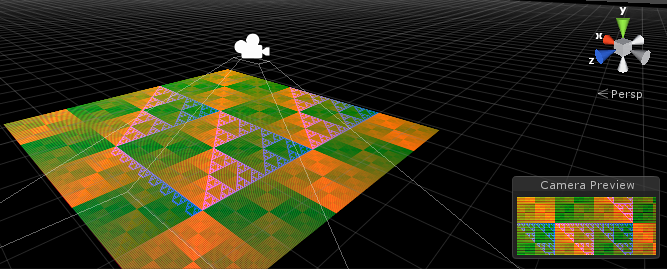Texturas Dispersas (Sparse Textures)
Sparse textures (also known as “tiled textures” or “mega-textures”) are textures that are too large to fit in graphic memory in their entirety. To handle them, Unity breaks the main texture down into smaller rectangular sections known as “tiles”. Individual tiles can then be loaded as necessary. For example, if the camera can only see a small area of a sparse texture, then only the tiles that are currently visible need to be in memory.
De otra manera, las sparse texturas se comportan como cualquier otra textura en sombreadores - ellas pueden tener mimaps, pueden utilizar todos los modos de filtración de textura, etc. Si a usted le toca leer de una baldosa que no está presente, usted puede obtener un resultado indefinido (en la mayoría de GPUs el resultado es un color negro, pero eso no es garantizado).
Tenga en cuenta que no todo el hardware y plataformas soportan sparse textures. Por ejemplo, en sistemas Direct X ellas requieren DX11.2 (Windows 8.1) y un GPU relativamente reciente; y en OpenGL ellas requieren soporte de extensión ARB_sparse_texture. Las Sparse Texturas también requieren de una licencia Unity Pro.
See the SparseTexture script reference page for further details about handling sparse textures from scripts.
Proyecto de ejemplo
A minimal example project for sparse textures is available here.

Proyecto ejemplo: SparseTextureExample.zip. En este ejemplo, un patron de textura simple de procedimiento es generado para simplicidad. Tenga en cuenta que esto no necesitará un GPU reciente y un sistema DirectX 11.2 (Windows 8,1), o utilizar OpenGL con soporte de textura ARB_sparse_.